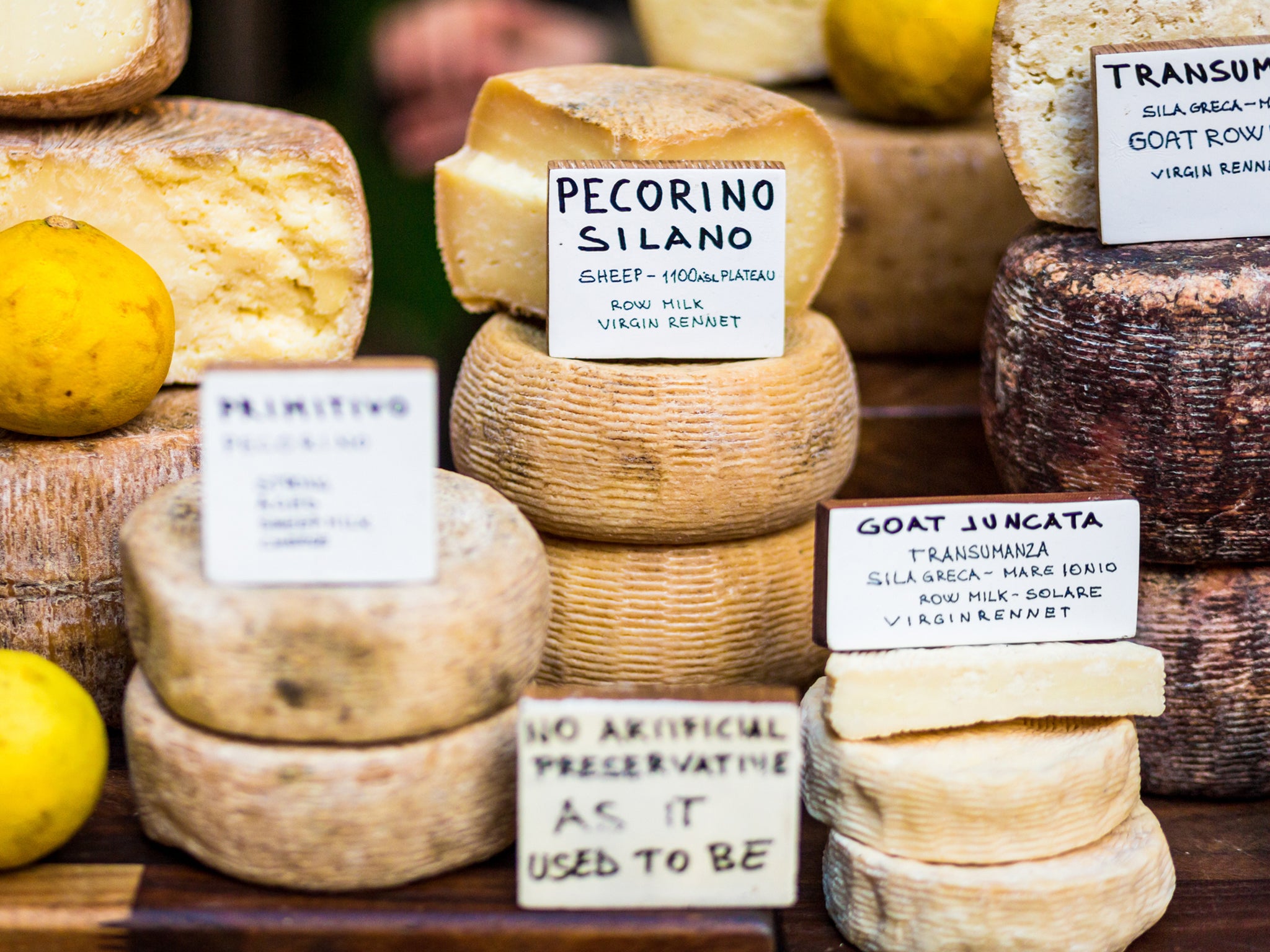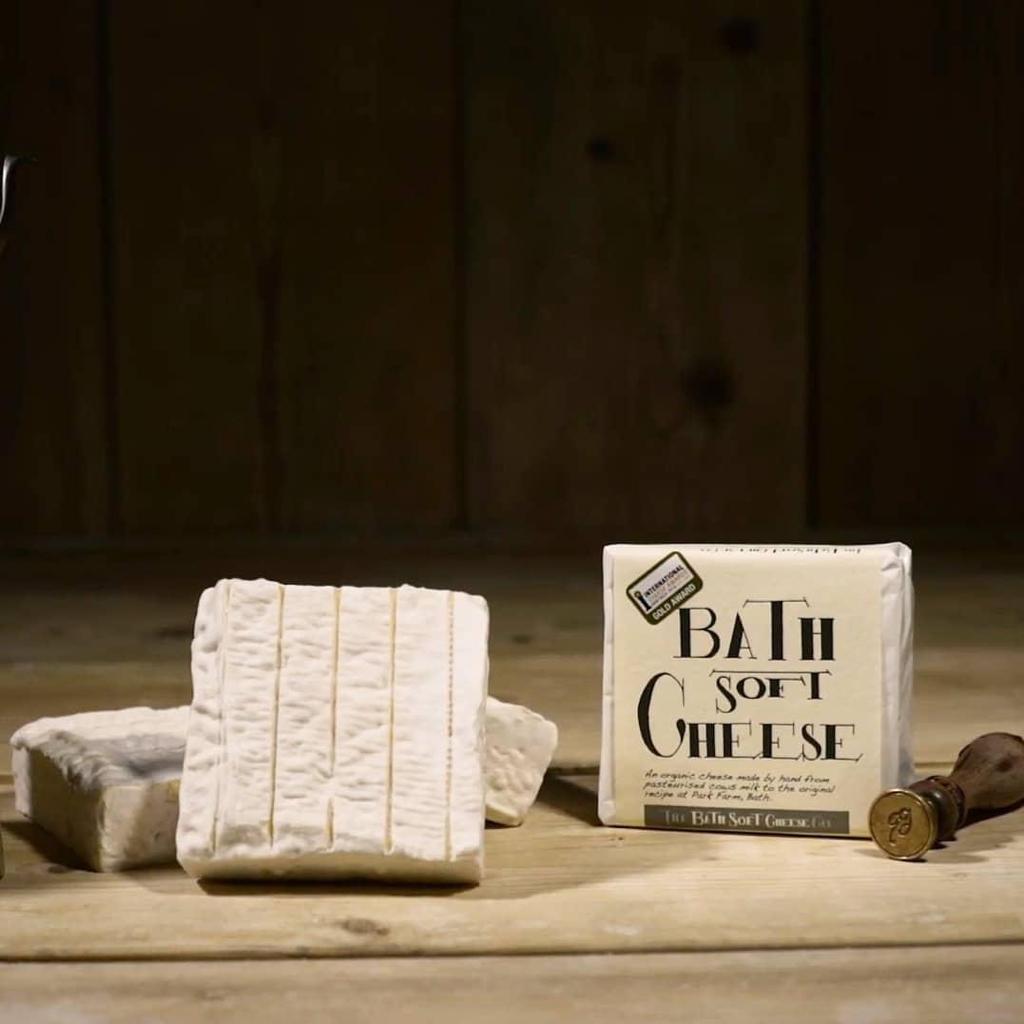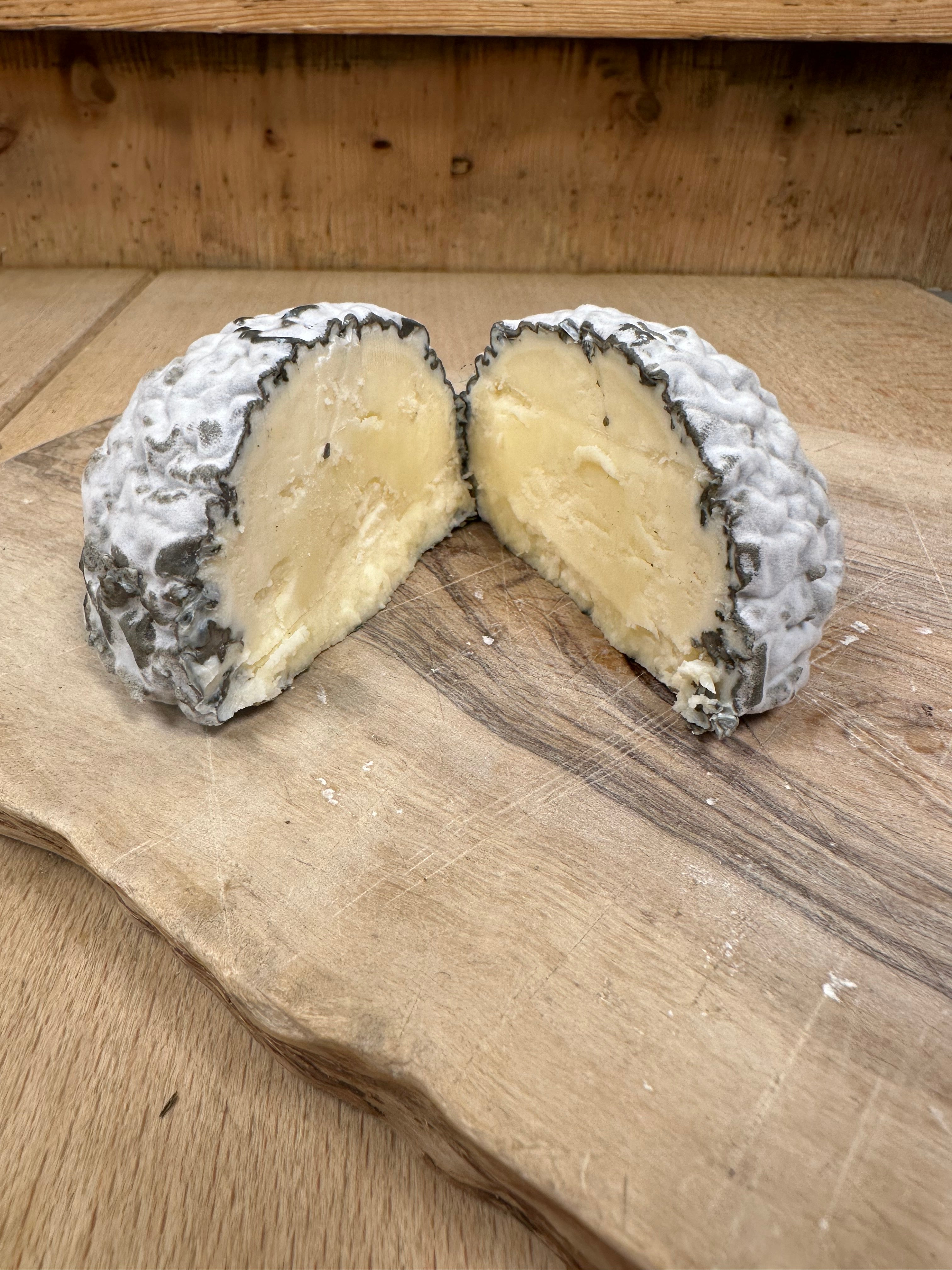The art of shopping for supremely good Christmas cheese
When the Christmas cheese board rolls around, the tyranny of choice looms large, especially at London’s culinary treasure trove Borough Market, writes Mark Riddaway. Here’s how to get it right

In the decade or so that I’ve been lucky enough to write and edit magazines, books and articles for Borough Market, I’ve spent a lot of time hanging around some of the best produce you’ll find anywhere in the country: meat, fish, spices, oils, olives, bread, charcuterie. But for all that abundance of culinary riches, if I’m pressed to identify what I love most about Borough, I don’t have to think too hard. It’s the cheese.
Nowhere else on the planet have I seen such a concentration of supremely good cheeses. Cheese created in small quantities by obsessive makers who know far too much about pasture, cows and microbes. Cheese that reflects the place it came from and the time it was made. Because of the interplay of dozens of variables, its character will shift in endlessly subtle ways. The seasons unfold, the weather fluctuates. The lushness of the grass changes, as do the flowers and seeds in the pasture, the stage of life of the cows, the microorganisms in the air of the dairy, the touch and personality of the cheesemakers. Every piece is different, and every piece is constantly evolving, even after you’ve bought it. This kind of cheese is a living thing with personality. Industrial cheese is, by contrast, a waxwork.
As a result, whenever Christmas rolls around, there’s a clear expectation that I’ll provide the final course. And that’s when the tyranny of choice looms large. There’s plenty of advice out there about how to construct the ideal cheese selection. How you need a blue, a hard cow, a soft cow, a goat, a sheep, blah, blah, blah. All that is entirely valid. The problem is that Borough, with around 20 stalls selling cheese, has more blues than a Mississippi music bar and more hard cows than the Milton Keynes sculpture park. Where do you even start?
The reassuring thing is that the baseline quality is high, so it’s hard to go disastrously wrong. Wander blindfolded around the Three Crown Square trading hall picking up cheeses at random and you’ll end up with a pretty decent cheeseboard. To my mind, though, there are three better approaches. The first – and easiest by far – is to pick a single stall and essentially outsource your choices to that cheesemonger. They’re all as obsessed as the people who made the cheese, and they love it when you put your faith in that obsession. One good tip is to employ the question: “So, what’s good right now?” It’s a simple query that makes a proper cheesemonger come alive. They’ll tell you, with eyes shining, about a particular wheel that this week is particularly lemony or buttery or crystalline. They’ll probably get you to taste it. You’ll be friends from then on.

The second approach is to pick a single country but mix up the stalls. The increasingly vibrant world of English farmhouse cheesemaking is extremely well represented. As well as having access to the treasure trove of native cheeses at Neal’s Yard Dairy and Heritage Cheese, one of the pleasures here is that you can also buy directly from producers, which is never a bad thing: Alsop and Walker (from Sussex), Blackwoods (from Kent), Trethowan Brothers (from Somerset), Bath Soft Cheese (the clue’s in the name), Kappacasein (from just up the road in Bermondsey).
Those twin behemoths of continental cheese, France and Italy, are similarly well covered. In fact, it’s easier to construct a wide-ranging French or Italian cheese selection at Borough than it often is in their home countries, where the (entirely laudable) strength of regional food cultures stands in the way – try to buy a tranche of Alpine beaufort in Normandy or Calabrian pecorino in Piedmont and see how you get on. By contrast, you can mosey from Mons Cheesemongers to Le Marché du Quartier, via Une Normande a Londres, The French Comte and Borough Cheese Company, and pick up a spread of magnificent Gallic cheeses that would otherwise require you to drive from the north coast of France to the Alps (in an increasingly stinky car).
The third approach is to go full League of Nations. Off the top of my head, I can think of a dozen countries, from Scotland to Switzerland, you could tap into for a truly cosmopolitan cheeseboard. Maybe some Paški Sir, a famous hard sheep’s cheese from the Croatian island of Pag. Some gentle, buttery Cashel Blue from the pasture-rich plains of Tipperary, Ireland. A generous slice of cheddar from the Isle of Mull (a cheese so covetable, it plays a key role in the final episode of Succession). A whole Torta de Barros, a soft, earthy, eminently scoopable sheep’s cheese from Extremadura in southern Spain. Some Wilde Weide gouda, made by a family from the Netherlands who fell in love with the cheeses they tasted on holiday in the Franche-Comté region of France, imported a herd of the area’s rare breed Montbeliarde cows, and created a cheese that is pure Dutch, but with a French accent.
The last of those is a good example of what Borough is all about. Whichever route I go, I’m not just looking for cheese, I’m looking for stories. Cheesemaking – steeped in history, rooted in geography, and dependent upon the insane commitment of the makers – lends itself well to the telling of tales, and there is no better time to repeat them than over a fat belly and a glass of port as the pace of eating slows on a Christmas afternoon, even if you can’t really remember the details and are making bits of it up.

Stichelton, perhaps my very favourite cheese, has a good story. In every way that matters, it’s a stilton – probably the best stilton you’ll ever eat – but it’s not allowed to call itself a stilton, because the hard-lobbying forces of Big Stilton managed to have it specified that only cheeses made from pasteurised milk can use the name. The makers of Stichelton – which uses beautiful, characterful raw milk – instead adopted the medieval spelling of the Nottinghamshire village of Stilton: a gentle flick of the V’s to their neighbours.
Then there’s the eponymous brie-like cheese made by Bath Soft Cheese Co, inspired by a letter written to Horatio Nelson by his dad recommending a cream cheese from Bath and created using a recipe found in an antique West Country grocer’s book. The only part of the recipe that wasn’t faithfully recreated was the instruction that salt be sprinkled on the young cheeses “with the aid of a feather” – more’s the pity.
Or Jumi’s Blue Brain, made in Switzerland’s Emmental valley, where a batch of fresh cheeses were left in a damp cave to mature and then forgotten about. When rediscovered, they were covered in a layer of vivid mould that made them look like, well, blue brains. Rather than immediately bin them in horror, the cheesemakers made the very cheesemakerly decision to try one instead and found it to be enjoyably fruity, with enough sharpness to lift the fungal funk. The brains progress through various stages of colour and flavour as they age, all of them far more beautiful than something so suggestive of an autopsy table has any right to be.
Go on a weekday morning when the market is quiet and the cheesemongers are feeling chatty, and you’ll hear a dozen stories like these. You’ll leave with far more cheese than you can possibly eat, and you’ll end up eating it anyway. And, frankly, you won’t be sorry.
Mark Riddaway is the author of ‘Borough Market: Edible Histories’
For more information on what you can find at Borough Market, visit: boroughmarket.org.uk
Join our commenting forum
Join thought-provoking conversations, follow other Independent readers and see their replies
Comments
Bookmark popover
Removed from bookmarks